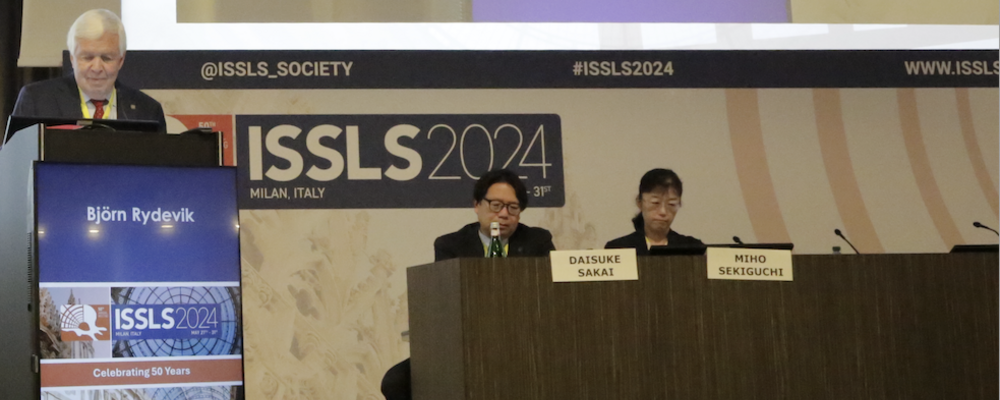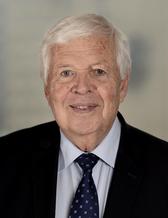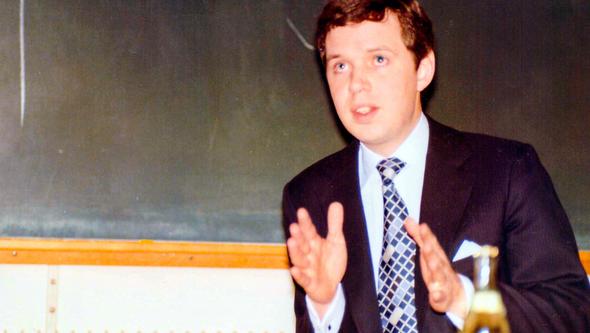
- Home
- News and events
- Find news
- International prize awarded to Björn Rydevik for his research on back pain
International prize awarded to Björn Rydevik for his research on back pain
Anyone who has ever experienced back pain and sciatica knows how incredibly painful it can be, and how long it can take to recover. Björn Rydevik was among the first to show that such pain is not only due to mechanical nerve compression from disc herniation, but also biological factors. His lifetime achievement is now recognized with a prestigious international prize.

"It is a recognition and a great honor. I am very pleased that colleagues who nominated me felt that the body of work I have done in back research, together with others, deserves this fine prize," says Björn Rydevik, senior professor of orthopedic surgery.
Focus on back pain
For several decades, Björn Rydevik has been one of the leading researchers contributing to putting Gothenburg on the world map in back research. The prize he received is called the ISSLS Wiltse Lifetime Achievement Award, named after one of the founders of the International Society for the Study of the Lumbar Spine (ISSLS). Björn Rydevik recently received the prize at a ceremony at the international society's meeting held this year in Milan, Italy. He has been a member and active in the society for many years, which celebrates its fiftieth anniversary this year. Until recently, the administrative center of ISSLS was located in Gothenburg, and on two occasions its annual meeting was also held in our city.
"The society is for all professional categories working with back pain, from orthopedists, rheumatologists, and physiotherapists to engineers, psychologists, and basic researchers. The meeting usually gathers up to 500 participants, and everything happens in the same session. So, all these people working with back pain are sitting in the same room, listening to and discussing with each other," he explains.

Björn Rydevik defended his thesis in 1979 on experimental studies of compression injuries to peripheral nerves. His main supervisor was Göran Lundborg, who later became a professor of hand surgery at Lund University. The work was conducted in the laboratory led by Per-Ingvar Brånemark, which Björn describes as a very dynamic environment.
Per-Ingvar Brånemark inspired his colleagues to see opportunities.
"Per-Ingvar Brånemark was a great visionary, who urged all of us to continue working clinically in parallel with our research. He inspired his colleagues to see opportunities. Brånemark's own research focused on clarifying how bone tissue reacts to different implants, but the laboratory worked broadly to understand other types of tissue damage after traumatic injury or other forms of impact," says Björn Rydevik, who also highlights Alf Nachemson as a very important role model and mentor in clinical work and research in spine orthopedics.
Both mechanics and biology
Together with his colleagues, Björn Rydevik realized early on that disc herniation cannot only be a mechanical problem, but there must also be biological factors. The severe pain that often radiates into the legs or arms in a disc herniation cannot only be due to disc tissue pressing on adjacent nerve roots. Björn Rydevik and his colleagues published the first review article on this in the journal Spine in 1984, where they introduced the idea that there must be some substances inside the cores of the spinal discs that leak out during disc herniation and cause inflammation in and around the nerve root. Several years of research later, the group also became the first in the world to show that the body's own tissue from the core of the spinal disc can indeed initiate an inflammatory process at the nerves in the spine, without mechanical nerve pressure from the disc.
"The nerves in the spine are enclosed in the vertebral column, where the bone tissue in the skeleton usually protects them from mechanical pressure. Therefore, these nerves lack the protective connective tissue sheaths that other nerves have, for example, in the arms and legs. When the core of a spinal disc bulges out as in a disc herniation, disc tissue is exposed to circulation, and a cascade of reactions starts," explains Björn Rydevik, and continues:
"Anyone who has had sciatica knows how incredibly painful it can be. Our findings can explain underlying causes of such pain. The results were widely recognized in back research and have later been confirmed by other research groups in follow-up experiments."
Strong back research
Subsequent research on the biological process behind back pain and sciatica showed, among other things, that the molecule TNF (tumor necrosis factor) plays an important role in this development. For several years, the research was then focused on increasing understanding of the interplay between mechanical and biological factors for the onset of sciatic pain and other nerve pain in disc herniation, spinal stenosis, and other pain conditions in the back. Björn Rydevik emphasizes that he has had the privilege of having many knowledgeable and dedicated colleagues who have made significant contributions to this research.
Throughout the years, Björn Rydevik's research has also been enriched by fruitful international collaborations. After his dissertation, he spent a period at the University of California San Diego, which led to long-term cooperation with researchers at this university. He and his colleagues had a particularly fruitful exchange for almost twenty years with Professor Shinichi Kikuchi and his research group at Fukushima Medical University. Shinichi Kikuchi later became an honorary doctor at Sahlgrenska Academy. The exchange meant that many promising young Japanese researchers in orthopedics came to Gothenburg to work on spinal research.
"It was very productive, with several other researchers at Sahlgrenska Academy also contributing. Personally, I formed a great friendship. I visited Japan a large number of times during those years," says Björn Rydevik.
Fantastic study years
Doctors often come from families with a medical background, but that was not the case for Björn Rydevik. He applied and was accepted to medical school after his interest was sparked by some friends who were already studying medicine.
"I thought the education in Gothenburg was very good, with high quality and dedicated teachers who also became inspiring role models. It felt like the education was an integral part of the clinic, even though at that time we started with two theoretical years on Medicinareberget," recalls Björn.
The student orchestra Blåshjuden still holds a special place in Björn Rydevik's heart. During his student years, he played the tuba in the orchestra, and the music played was usually lively marches. The formal name of the orchestra is the Royal HofMessingsMusiqueCorps (KHMMC) Blåshjuden af Götheborg.
"It was a fantastic period. In the orchestra, I also got to know Göran Lundborg, who later became my supervisor when I was a doctoral student. I still try to see and hear Blåshjuden play when I get the chance," says Björn, who for many years also had the honor of being appointed inspector for the Sahlgrenska Academy's student union.
For a period, Björn Rydevik was the head of the former Department of Surgical Disciplines. For some years now, he has been the chairman of the Research Ethics Council at the Sahlgrenska Academy, and a member of the Gothenburg University Ethics Committee. Recently, he was also appointed as a member of the steering group for the GoCo Health Innovation City's grouping MultiHelix Think Tank, which is a think tank where parties from, among others, the academy, healthcare, and industry, both public and private sectors, collaborate to exchange ideas on solutions to future challenges in the Life Science field.
By: Elin Lindström
This year's recipient of the ISSLS Wiltse Lifetime Achievement Award.
YEAR: 77
LIVES: in Örgryte, Gothenburg
FAMILY: Wife, 3 children and 5 grandchildren
HOBBIES: Enjoys boating and the sea. Listens to a lot of music, preferably Mozart but also more modern classics like Frank Sinatra and Rod Stewart.